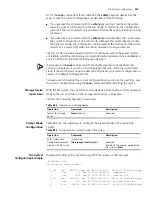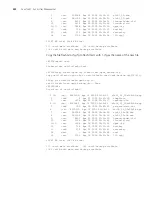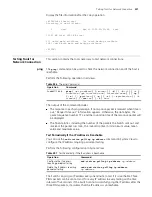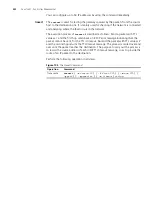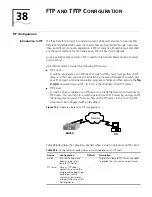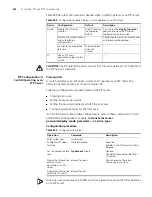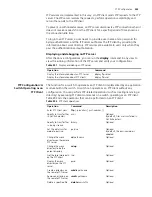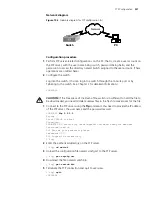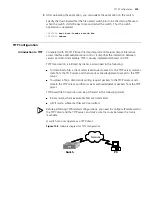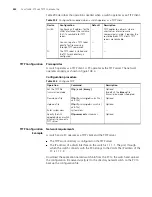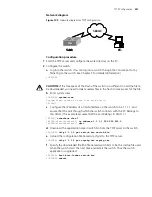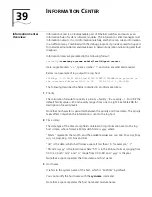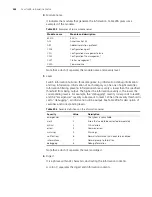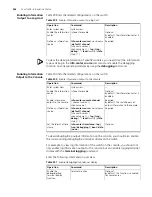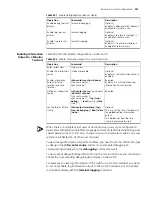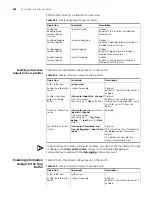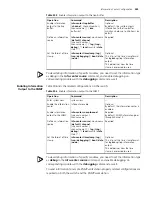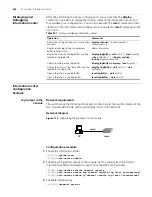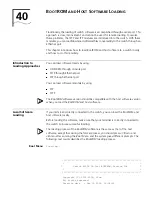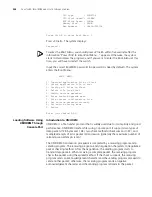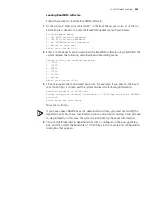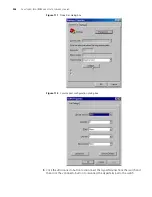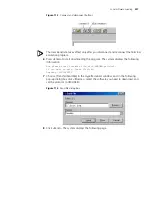
39
I
NFORMATION
C
ENTER
Information Center
Overview
Information center is an indispensable part of Ethernet switches and exists as an
information hub of system software modules. The information center manages most
information outputs; it sorts information carefully, and hence can screen information
in an efficient way. Combined with the debug program, it provides powerful support
for network administrators and developers in network operation monitoring and fault
diagnosis.
Information items are presented in the following format:
<priority>
timestamp sysname module/level/digest:content
Here, angle brackets “<>”, spaces, slashes “/” and colon are valid and required.
Below is an example of log output to a log host:
<188>Apr 9 17:28:50 2004 3Com 4200G IFNET/5/UPDOWN:Line protocol on
the interface M-Ethernet0/0/0 is UP (SIP=10.5.1.5 ,SP=1080)
The following describes the fields contained in an information item:
1
Priority
The calculation formula for priority is priority = facility
×
8 + severity – 1. For VRP, the
default facility value is 23 and severity ranges from one to eight. See Table 296 for
description of severity levels.
Note that no character is permitted between the priority and time stamp. The priority
takes effect only when the information is sent to the log host.
2
Time stamp
The data type of the time stamp field contained in log information sent to the log
host is date, whose format is Mmm dd hh:mm:ss yyyy, where:
“Mmm” represents the month, and the available values are: Jan, Feb, Mar, Apr, May,
Jun, Jul, Aug, Sep, Oct, Nov and Dec.
“dd” is the date, which shall follow a space if less than 10, for example, “ 7”.
“hh:mm:ss yyyy” is the local time, where “hh” is in the 24-hour format, ranging from
00 to 23, both “mm” and ”ss” range from 00 to 59, and “yyyy” is the year.
Note that a space separates the time stamp and host name.
3
Host name
It refers to the system name of the host, which is “S4200G” by default.
You can modify the host name with the
sysname
command.
Note that a space separates the host name and module name.
Содержание 4200G 12-Port
Страница 10: ...8 CONTENTS...
Страница 14: ...4 ABOUT THIS GUIDE...
Страница 46: ...32 CHAPTER 5 LOGGING IN THROUGH WEB BASED NETWORK MANAGEMENT SYSTEM...
Страница 48: ...34 CHAPTER 6 LOGGING IN THROUGH NMS...
Страница 60: ...46 CHAPTER 9 VLAN CONFIGURATION...
Страница 64: ...50 CHAPTER 10 MANAGEMENT VLAN CONFIGURATION...
Страница 80: ...66 CHAPTER 13 GVRP CONFIGURATION...
Страница 98: ...84 CHAPTER 15 LINK AGGREGATION CONFIGURATION...
Страница 112: ...98 CHAPTER 18 MAC ADDRESS TABLE MANAGEMENT...
Страница 126: ...112 CHAPTER 19 LOGGING IN THROUGH TELNET...
Страница 162: ...148 CHAPTER 20 MSTP CONFIGURATION...
Страница 274: ...260 CHAPTER 29 IGMP SNOOPING CONFIGURATION...
Страница 276: ...262 CHAPTER 30 ROUTING PORT JOIN TO MULTICAST GROUP CONFIGURATION...
Страница 298: ...284 CHAPTER 33 SNMP CONFIGURATION...
Страница 304: ...290 CHAPTER 34 RMON CONFIGURATION...
Страница 338: ...324 CHAPTER 36 SSH TERMINAL SERVICES...
Страница 356: ...342 CHAPTER 38 FTP AND TFTP CONFIGURATION...
Страница 365: ...Information Center Configuration Example 351 S4200G terminal logging...
Страница 366: ...352 CHAPTER 39 INFORMATION CENTER...
Страница 378: ...364 CHAPTER 40 BOOTROM AND HOST SOFTWARE LOADING...
Страница 384: ...370 CHAPTER 41 Basic System Configuration and Debugging...
Страница 388: ...374 CHAPTER 43 NETWORK CONNECTIVITY TEST...
Страница 406: ...392 CHAPTER 45 CONFIGURATION OF NEWLY ADDED CLUSTER FUNCTIONS...
Страница 422: ...408 CHAPTER 48 UDP HELPER CONFIGURATION...

